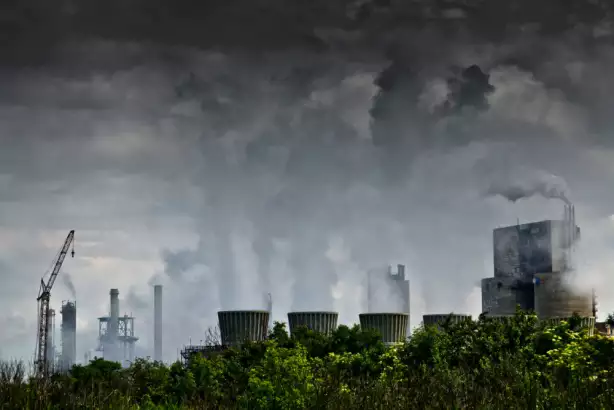RTO Air Pollution Control Best Practices
Introducción
Regenerative Thermal Oxidizers (RTOs) are widely used in industries for controlling air pollution. RTOs work by destroying organic compounds present in the effluent gas stream by oxidizing them into carbon dioxide and water vapor. However, improper use and maintenance of RTOs can lead to reduced efficiency and increased operational costs. Therefore, it is essential to implement best practices in the design, operation, and maintenance of RTOs to ensure optimum performance and compliance with regulations. This article aims to discuss the RTO air pollution control best practices.
Design Best Practices
- Select Appropriate Size: The size of the RTO should be selected depending on the volume and composition of the effluent gas stream. Undersized RTOs can lead to reduced destruction efficiency, whereas oversizing can lead to increased costs.
- Proper Insulation: RTOs should be adequately insulated to minimize heat loss and improve energy efficiency. High-quality insulation materials that can withstand high temperatures should be used.
- Efficient Heat Recovery: RTOs should be designed to recover and reuse as much heat as possible to reduce energy consumption and operating costs. The use of secondary heat exchangers and preheaters can significantly improve heat recovery efficiency.
- Optimized Flow Dynamics: The RTO should be designed to ensure optimal flow dynamics, which can improve the heat transfer rate and destruction efficiency. The use of uniform flow distribution devices and proper positioning of catalyst beds can improve flow dynamics.
Operation Best Practices
- Continuous Monitoring: RTOs should be continuously monitored to ensure optimum performance and compliance with regulations. Key parameters such as temperature, pressure, and flow rate should be monitored regularly.
- Proper Loading: The RTO should be operated at the designed load to ensure optimum destruction efficiency. Overloading or underloading can lead to reduced performance and increased operating costs.
- Optimized Startup and Shutdown: Proper startup and shutdown procedures should be followed to avoid thermal shock and prolong the lifespan of the RTO. The use of automated control systems can significantly improve startup and shutdown efficiency.
- Regular Maintenance: Routine maintenance such as catalyst replacement, cleaning, and inspection should be carried out to ensure optimum performance and prolonged lifespan. The use of predictive maintenance techniques can help in identifying potential issues before they become critical.
Conclusión
In conclusion, implementing best practices in the design, operation, and maintenance of RTOs can significantly improve their efficiency and reduce operational costs. Selecting the appropriate size, proper insulation, efficient heat recovery, and optimized flow dynamics are some of the design best practices. Continuous monitoring, proper loading, optimized startup and shutdown, and regular maintenance are some of the operation best practices. By following these best practices, industries can ensure compliance with regulations and reduce their environmental footprint.


Presentación de la empresa
Our company is a high-tech enterprise specializing in comprehensive treatment of volatile organic compounds (VOCs) waste gas and carbon reduction and energy-saving technology. We have four core technologies: thermal, combustion, sealing, and self-control; we have temperature field simulation, air flow field simulation and modeling calculation capability; we also have ceramic heat storage material performance, zeolite molecular sieve adsorption material selection, and VOCs organic matter high-temperature incineration oxidation special experimental testing capability.
Our core product is the rotating valve-type regenerative thermal oxidation furnace (RTO) and zeolite molecular sieve adsorption and concentration rotor, combined with our own environmental protection and thermal energy system engineering expertise, we can provide customers with comprehensive solutions for industrial waste gas treatment and heat energy utilization carbon reduction under various working conditions.
Our team has advantages, as we have a RTO technology research and development center and waste gas carbon reduction engineering technology center in Xi’an, and a 30,000 square meter production base in Yangling. We are a leading manufacturer of RTO equipment and zeolite molecular sieve rotor equipment in terms of production and sales volume globally. Our core technology team comes from the Aerospace Liquid Rocket Engine Research Institute (Aerospace Six Academy). We currently employ more than 360 employees, including more than 60 R&D technology backbones, including 3 senior engineers with research-level qualifications, 6 senior engineers, and 47 thermodynamic doctors.
Certifications, Patents, and Honors
Our company has obtained knowledge property management system certification, quality management system certification, and environmental management system certification, as well as construction industry qualifications, high-tech enterprise certification, rotating heat storage oxidation furnace turning valve patents, rotary heat storage incineration equipment patents, and disc-type zeolite rotor patents, among others.

How to Choose the Right RTO Equipment
- Determine the characteristics of the waste gas
- Understand the local regulations and emission standards
- Evaluate energy efficiency
- Consider operation and maintenance
- Budget and cost analysis
- Choose the appropriate type of RTO
- Consider environmental and safety factors
- Performance testing and verification
It is crucial to consider each point in detail when selecting the appropriate RTO equipment.

RTO Air Pollution Control Service Process
- Initial consultation, on-site investigation, and needs analysis
- Scheme design, simulation, and scheme review
- Customized production, quality control, and factory testing
- On-site installation, commissioning, and training services
- Regular maintenance, technical support, and spare parts supply
We provide one-stop RTO air pollution control solutions, and our professional team can customize RTO solutions for customers.
Autor: Miya
